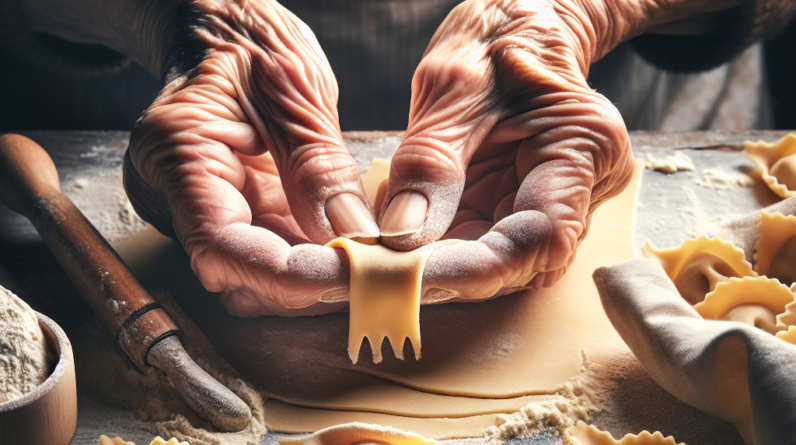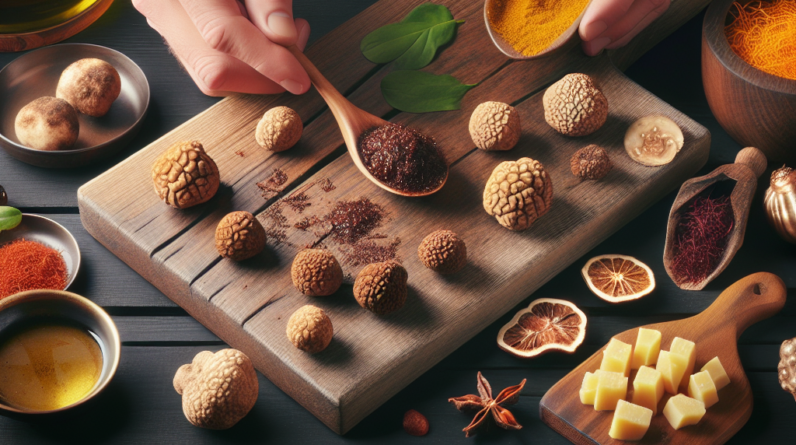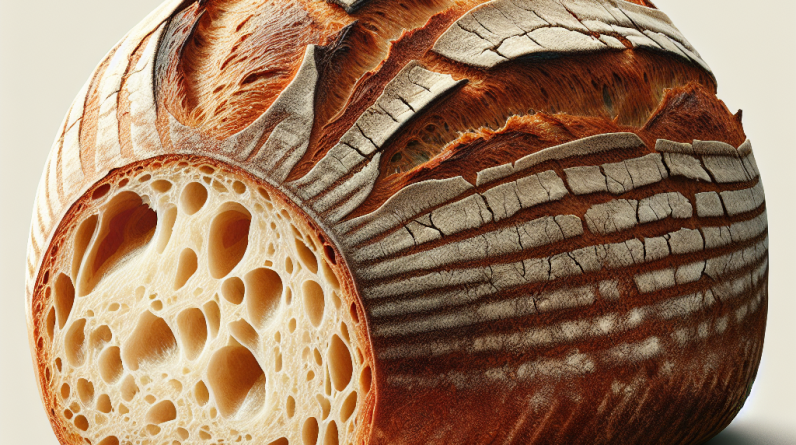Italian cuisine is renowned for its rich and flavorful dishes, and one staple that stands out is Italian meats. Whether you’re a seasoned chef or a novice in the kitchen, the thought of creating mouthwatering dishes like saltimbocca can be both exciting and daunting. Fear not! In this article, we will guide you through the art of properly seasoning and cooking Italian meats, ensuring that your dishes turn out deliciously authentic every time. So grab your apron and let’s dive into the world of Italian gastronomy!

Choosing the Right Italian Meat
When it comes to Italian cuisine, the choice of meat is of utmost importance. Italian meats are known for their rich flavors and high quality, and selecting the right one can make or break a dish. To choose the right Italian meat, it is essential to understand the different types available.
Understanding Different Italian Meats
Italian cuisine offers a wide variety of meats, each with its own unique characteristics. Some of the most popular Italian meats used in dishes like saltimbocca include prosciutto, pancetta, and veal. Prosciutto is a dry-cured ham known for its delicate and savory flavor. Pancetta, on the other hand, is made from pork belly that has been salt-cured and spiced, resulting in a rich and flavorful meat. Veal, often used in traditional Italian recipes, is known for its tender and mild taste.
Popular Italian Meats Used in Saltimbocca
Saltimbocca, a delicious Italian dish, typically calls for thinly sliced veal, although other meats such as chicken or pork can also be used. Its name translates to “jump in the mouth,” which perfectly describes the burst of flavors that you experience with every bite. Thin veal cutlets are traditionally topped with prosciutto and sage, creating a taste sensation that is hard to resist.
Selecting Fresh and High-Quality Meats
To ensure the best results, it is crucial to select fresh and high-quality Italian meats. Look for meats that are well-marbled with fat, as this will help enhance the flavor and tenderness of the dish. Additionally, check for any signs of discoloration or unpleasant odors, as this can be a sign of spoiled meat. If possible, buy your meats from a trusted butcher or specialty store that specializes in Italian meats.
Preparing Italian Meats for Cooking
Before you start cooking your Italian meats, it is essential to properly prepare them. This involves trimming and cleaning the meat, pounding it to the desired thickness, and marinating it to enhance the flavors.
Trimming and Cleaning the Meat
When it comes to preparing Italian meats, it’s important to ensure that any excess fat or silver skin is trimmed off. This helps to prevent the meat from becoming tough and chewy during the cooking process. Additionally, give the meat a quick rinse under cold water to remove any debris or impurities.
Pounding the Meat to Desired Thickness
To ensure even cooking and tender results, it’s recommended to pound the meat to the desired thickness. This also helps to tenderize the meat, making it easier to eat. Using a meat mallet or a rolling pin, gently pound the meat until it reaches the desired thickness. Be careful not to pound it too thin, as this can cause the meat to dry out or become too delicate.
Marinating the Meat for Flavor Enhancement
Marinating Italian meats can add an extra layer of flavor and tenderness. A simple marinade can consist of olive oil, garlic, herbs, and spices. Allow the meat to marinate in the refrigerator for at least 30 minutes, or ideally overnight, to allow the flavors to penetrate the meat. This step is especially important for leaner cuts of meat, as it helps to add moisture and flavor.
Seasoning Italian Meats
Seasoning Italian meats is a vital step in bringing out their natural flavors and creating a delicious dish. By utilizing traditional Italian spices and herbs, balancing the flavors with salt and pepper, and experimenting with flavored salt and rubs, you can enhance the taste of your Italian meats.
Utilizing Traditional Italian Spices and Herbs
Italian cuisine is known for its use of aromatic spices and fresh herbs. For seasoning Italian meats, popular choices include rosemary, thyme, oregano, and basil. These herbs add depth and complexity to the flavor profile, enhancing the overall taste of the dish. Additionally, spices such as garlic powder, onion powder, and paprika can be used to further enhance the flavors.
Balancing the Flavors with Salt and Pepper
Salt and pepper are essential ingredients in Italian cooking, and they play a crucial role in balancing the flavors of Italian meats. Be sure to season the meat generously with salt and pepper before cooking. This helps to bring out the natural flavors and ensures that the meat is well-seasoned throughout.
Experimenting with Flavored Salt and Rubs
If you’re looking to add a unique twist to your Italian meat dishes, consider experimenting with flavored salts and rubs. Flavored salts, such as truffle salt or smoked salt, can add a gourmet touch to your meat. Rubs made from a combination of herbs, spices, and aromatics can also add a burst of flavor. Get creative and try different combinations to find your favorite flavor profiles.
Cooking Italian Meats
Once your Italian meats are properly seasoned, it’s time to cook them to perfection. Choosing the appropriate cooking method, whether it’s pan-frying, grilling, or baking, can greatly influence the taste and texture of the final dish.
Choosing the Appropriate Cooking Method
The choice of cooking method depends on the type of meat and the desired outcome. Pan-frying is ideal for thin cuts of meat, as it allows for quick cooking and a crispy exterior. Grilling can infuse the meat with a smoky flavor and is perfect for thicker cuts. Baking is a great option for larger cuts or when you prefer a more tender and juicy result.
Pan-Frying Italian Meats to Perfection
Pan-frying Italian meats involves cooking them in a hot skillet with a small amount of oil or butter. This method allows for quick and even cooking, resulting in a flavorful and crispy exterior. To pan-fry Italian meats, preheat a skillet over medium-high heat, add the meat, and cook until browned on both sides. Be careful not to overcook the meat, as this can cause it to become dry and tough.
Grilling Italian Meats for Smoky Flavor
Grilling Italian meats adds a delicious smoky flavor that pairs perfectly with the natural flavors of the meat. Preheat the grill to medium-high heat and brush the meat with oil or marinade to prevent sticking. Place the meat on the grill and cook until desired doneness, flipping halfway through. Remember to keep a close eye on the meat to prevent it from drying out.
Baking Italian Meats for Tender Results
Baking Italian meats is a great option when you’re looking for tender and juicy results. Preheat the oven to the desired temperature, place the meat in a baking dish or on a baking sheet, and cook until the internal temperature reaches the desired level of doneness. Baking allows for slower and more even cooking, resulting in a moist and flavorful meat.

Preparing Saltimbocca
Saltimbocca is a classic Italian dish that features thinly sliced meat topped with prosciutto and sage. To prepare this delicious dish, it’s important to understand its components and choose the ideal meat.
Understanding the Dish Saltimbocca
Saltimbocca is an Italian dish that originated in Rome. Its name translates to “jump in the mouth,” which perfectly describes the burst of flavors that you experience with every bite. Traditionally, saltimbocca is made with thinly sliced veal cutlets topped with prosciutto and sage. The combination of flavors creates a harmonious blend of saltiness and herbal notes.
Choosing the Ideal Meat for Saltimbocca
While veal is the most traditional choice for saltimbocca, other meats such as chicken or pork can also be used. The key is to choose a lean and tender meat that will cook quickly and evenly. Thinly sliced meat is essential to ensure that all the flavors meld together during the cooking process.
Preparing the Meat with Prosciutto and Sage
To prepare saltimbocca, start by seasoning the meat with salt and pepper. Place a slice of prosciutto on top of each meat cutlet, followed by a fresh sage leaf. Secure the prosciutto and sage in place by gently pressing them into the meat. This allows the flavors to infuse and adds a beautiful presentation to the dish.
Cooking Saltimbocca
To bring out the best flavors in saltimbocca, it’s essential to cook it using the appropriate method. Whether you choose to pan-sear it for a crispy texture, simmer it in a white wine sauce, or bake it for a meltingly tender outcome, the cooking process is crucial in achieving the perfect result.
Pan-Searing Saltimbocca for Crispy Texture
Pan-searing saltimbocca allows for a crispy exterior while keeping the meat tender and juicy. Heat a skillet over medium-high heat and add a small amount of oil or butter. Carefully place the saltimbocca in the hot skillet and cook for a few minutes on each side until the prosciutto is crispy and the meat is cooked to your desired level of doneness.
Simmering Saltimbocca in White Wine Sauce
Simmering saltimbocca in a delicate white wine sauce imparts extra flavor and ensures a moist and tender outcome. After pan-searing the saltimbocca, remove it from the skillet and set it aside. Deglaze the skillet with white wine, scraping up any browned bits from the bottom. Return the saltimbocca to the skillet and simmer in the white wine sauce for a few minutes to allow the flavors to meld together.
Baking Saltimbocca for Meltingly Tender Outcome
Baking saltimbocca is an excellent method for achieving a meltingly tender result. Preheat the oven to the desired temperature and place the saltimbocca in a baking dish. Bake for a few minutes until the meat is cooked through and the prosciutto is crispy. Baking allows for even cooking and ensures that all the flavors blend together beautifully.

Serving and Pairing Saltimbocca
Now that your saltimbocca is perfectly cooked, it’s time to serve it with the right accompaniments and pair it with the perfect wine to complement its flavors.
Plating and Garnishing Saltimbocca
When plating saltimbocca, consider placing it on a bed of sautéed spinach or creamy polenta. These sides not only provide a delicious contrast in flavors but also create an eye-catching presentation. Garnish the dish with a sprinkle of fresh chopped parsley or a drizzle of olive oil to add a final touch of freshness and elegance.
Accompaniments that Complement Saltimbocca
To enhance the flavors of saltimbocca, consider serving it alongside classic Italian sides such as roasted potatoes, steamed vegetables, or a simple salad dressed with a light vinaigrette. The simplicity of these dishes allows the saltimbocca to take center stage while providing a balanced meal.
Recommended Wine Pairings
Choosing the right wine to pair with saltimbocca can elevate the dining experience. For those who prefer a white wine, a crisp and dry Pinot Grigio or Chardonnay can complement the flavors of the dish. If you prefer red wine, a medium-bodied Sangiovese or Barbera can provide a nice contrast and enhance the rich flavors of the saltimbocca.
Tips and Tricks for Perfect Results
To achieve perfect results when cooking Italian meats and preparing dishes like saltimbocca, consider the following tips and tricks:
Getting the Timing Right
When cooking Italian meats, timing is everything. Overcooking can result in dry and tough meat, while undercooking can lead to an unpleasant texture. Make sure to follow the recommended cooking times for your specific meat and cooking method to achieve perfect results.
Using a Meat Thermometer for Accuracy
To ensure that your Italian meats are cooked to the desired level of doneness, consider using a meat thermometer. This allows for precise temperature control, ensuring that the meat is cooked to the ideal internal temperature. Different types of meat have different recommended internal temperatures, so be sure to consult a cooking guide for accurate readings.
Allowing the Meat to Rest before Serving
After cooking Italian meats, it’s essential to allow them to rest before serving. This allows the juices to redistribute throughout the meat, resulting in a more tender and flavorful outcome. Tent the cooked meat with foil and let it rest for a few minutes to achieve the best results.
Exploring Variations of Italian Meat Dishes
Italian cuisine offers a wide variety of meat dishes beyond saltimbocca. Exploring other traditional Italian meat dishes can expand your culinary repertoire and introduce you to new flavors and cooking techniques. Some popular options include osso buco, bistecca alla Fiorentina, and porchetta. Don’t be afraid to experiment and adapt these classic recipes to suit your personal taste.
Adapting Classic Recipes to Personal Taste
One of the beauties of Italian cooking is its flexibility and adaptability. Don’t be afraid to put your own spin on classic Italian meat dishes. Experiment with different seasonings, cooking methods, and accompaniments to create a dish that reflects your personal taste and preferences. Italian cuisine is all about creativity and embracing the joy of cooking.
Mastering the Art of Italian Meat Cooking
Mastering the art of Italian meat cooking takes practice and a willingness to explore new flavors and techniques. As with any skill, the more you cook Italian meats, the better you will become. Embrace the process, have fun in the kitchen, and don’t be afraid to make mistakes. With time and experience, you will develop your unique style and flair for Italian meat dishes.
Practice Makes Perfect
The saying “practice makes perfect” definitely holds true when it comes to cooking Italian meats. The more you cook and experiment with different cuts of meat and cooking methods, the better you will become at achieving delicious results. Don’t be discouraged by the occasional mishap – every great cook has had their fair share of cooking blunders.
Embracing Creativity in Seasoning and Cooking
Italian cooking is all about using fresh ingredients, bold flavors, and creative combinations. Don’t be afraid to think outside the box when it comes to seasoning and cooking Italian meats. Combine different herbs and spices, experiment with different cooking techniques, and let your creativity shine through in your dishes. The beauty of Italian cuisine is that there are no rules – just delicious food waiting to be created.
In conclusion, properly seasoning and cooking Italian meats is a skill that can take your culinary adventures to new heights. By choosing the right meat, preparing it with care, and seasoning it to perfection, you can create delicious dishes like saltimbocca that will impress your family and friends. Remember to embrace the art of Italian meat cooking, practice with enthusiasm, and never be afraid to get creative in the kitchen. Buon appetito!










